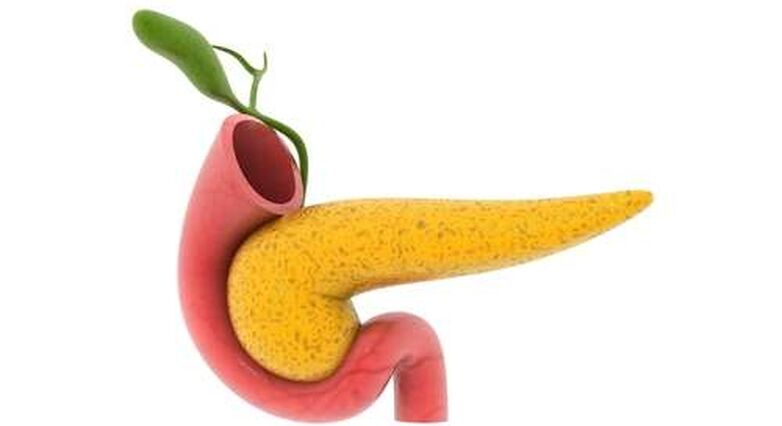סוכרת סוג-2
מנהלי קהילה



בדיקה: האם תרופות לסוכרת מסכנות את הלבלב?
ה-FDA בוחן אם תרופות כמו ג'נוביה ובייטה קשורות לדלקת הלבלב ושינויים טרום סרטניים

מנהל המזון והתרופות האמריקאי (ה-FDA) בודק בימים אלה אם קיים סיכון מוגבר לדלקת הלבלב ושינויים טרום סרטניים בלבלב, עקב השימוש בתרופות נפוצות לטיפול בסוכרת סוג 2.
התרופות עליהן מדובר הן תרופות ממשפחת חקייני אינקרטין (Incretin Mimetics) בהן בייטה, ויקטוזה, ג'נוביה ותרופות נוספות. תרופות אלה מחקות את ההורמון הטבעי אינקרטין, המאותת ללבלב לשחרר אינסולין לאחר אכילה.
הבדיקה החלה בעקבות ממצאים שטרם פורסמו, ממחקר שבחן דגימות רקמות לבלב שנלקחו ממטופלים שמתו מסיבות לא ברורות.
ב-FDA מבהירים כי הם מבקשים לבחון את הסיכון הפוטנציאלי, אך הם עדיין לא הגיעו למסקנות חדשות לגבי בטיחות התרופות. הם רק ביקשו ליידע את הציבור שהערכה כזו מתבצעת.
עוד מדגישים במנהל, כי בזמן זה מטופלים צריכים להמשיך לקחת את התרופות שלהם לפי הוראות הרופא וההגבלות בתוויות ועלון התרופה.
בעבר ה-FDA ביקש מהציבור לדווח על דלקת לבלב הקשורה לשימוש בתרופות. תוויות התרופה ועלון התרופה מכילים כבר אזהרות לגבי הסיכון לדלקת חריפה של הלבלב. עם זאת, ה-FDA לא הזהיר בעבר מפני סיכון מוגבר לשינויים טרום סרטניים בלבלב עקב השימוש בתרופות ולא הגיע למסקנות בנושא.
לאחרונה הייתה התפתחות נוספת. מחקר שפורסם בחודש שעבר בכתב העת JAMA בחן את נתוני חברות הביטוח ומצא כי השימוש בתרופות בייטה וג'נוביה קשור לסיכון מוגבר להתפתחות דלקת חריפה של הלבלב. עם זאת, גם החוקרים ציינו כי המטופלים צריכים להמשיך ליטול את התרופות. ארגונים מקצועיים, בהם איגוד הסוכרת האמריקאי, הטילו ספק בחוזקם של ממצאי המחקר.
ה-FDA יפרסם הודעה כשיהיה חדש בנושא. בינתיים מבקשים ממטופלים ורופאים לדווח על תופעות לוואי בקרב המשתמשים בתרופות.
בשנה שעברה הודיע משרד הבריאות בישראל כי הוא בודק חשד להיארעות דלקת לבלב וסרטן הלבלב כתוצאה מנטילת התרופה ויקטוזה, בעקבות דיווחים ספורים שהועברו לאגף הרוקחות. במשרד הדגישו כי בקרב חולי סוכרת קיים שיעור גבוה יותר של תחלואה בסרטן הלבלב גם שלא בהקשר לנטילת תרופות וכי אין שינוי בהנחיות לגבי נטילת התכשיר.
תרגום ועריכה: ד"ר דינה ראלט


ד"ר דינה ראלט PhD
http://www.bmj.com/content/346/bmj.f3680?etoc=
מינרבה1
LOS ANGELES -- March 27, 2013 -- Individuals who had taken a type of drug commonly used to treat type 2 diabetes showed abnormalities in the pancreas, including cell proliferation, that may be associated with an increased risk of neuroendocrine tumours, according to a new study by researchers from UCLA and the University of Florida. Their findings were published online March 22 in the journal Diabetes.
The researchers, from the Larry L. Hillblom Islet Research Center, UCLA, Los Angeles, California and the Diabetes Center at the University of Florida, Gainesville, Florida, found that cell mass was increased approximately 40% in the pancreases of deceased organ donors who had type 2 diabetes and who had been treated with incretin therapy.
Although there have been conflicting reports on the effects of the incretin class of drugs on the pancreas in animal studies, this is the first study to note such changes in the human pancreas.
“There is an increasing appreciation that animal studies do not always predict findings in humans,” said Peter Butler, MD, Hillblom Islet Research Center.
The researchers examined the pancreases of 20 deceased organ donors with type 2 diabetes. Eight had been treated for at least a year with incretin therapy, while the other 12 had received therapies that didn’t include incretin-based drugs. The researchers also evaluated 14 pancreases from a control group of patients of a similar age without diabetes.
The pancreases of the individuals who had been on incretin therapy were larger than those of patients on other types of diabetes therapies, and this larger size was associated with increased cellular proliferation. Incretin-treated individuals showed an increase in pancreas dysplasia as well as an expansion of alpha cells.
This latter finding is likely a consequence of GLP-1–based therapies’ suppression of the release of glucagon by alpha cells, since decreasing the availability or action of the hormone glucagon has been shown in a variety of prior studies to induce a proliferation of pancreatic alpha cells. This alpha-cell expansion has been associated with the development of pancreatic neuroendocrine tumours. Three of the 8 incretin-treated individuals had microadenomas and 1 has a neuroendocrine tumour composed of alpha cells.
Of the 8 donors who were on incretin therapy, 7 had been taking sitagliptin (Januvia), and 1 had been on exenatide (Byetta). These and similar drugs are currently under investigation by the US Food and Drug Administration for their possible links to pancreatitis and pancreatic cancer.
“These findings lend additional weight to concerns regarding the effects of long term GLP-1–related therapy, with respect to both unintended proliferative actions on the exocrine pancreas and now also a possible increased risk of neuroendocrine tumours,” the researchers write. “In addition to the surveillance previously recommended for the potential association of GLP-1– based therapy and pancreatic cancer risk, the current data imply that surveillance for a possible increased risk of pancreatic neuroendocrine tumours is warranted.”
Such surveillance approaches might include MRI imaging of the pancreas and screening for neuroendocrine tumours, Dr. Butler said.
“The present studies are only from a small number of individuals, and while the findings do raise concerns, it will be important that other approaches are now used in a larger group of living individuals to further investigate these findings,” he said.
A recent study led by Sonal Singh, MD, Johns Hopkins University School of Medicine and Public Health, Baltimore, Maryland and published in JAMA Internal Medicine suggested a doubling in the risk of hospitalisation for acute pancreatitis with the GLP-1–based therapies and also recommended further research.
“Since most risk factors for acute pancreatitis are also linked to an increased risk of pancreatic cancer, these findings of changes in the human pancreas are very concerning,” said Dr. Singh. “Now that GLP-1–based therapies have been shown to increase the risk of pancreatic inflammation and abnormal cell proliferation, further studies are needed to urgently clarify whether these linkages lead to pancreatic cancer with long-term use.”
SOURCE: University of California, Los Angeles (UCLA), Health Sciences
ד"ר דינה ראלט PhD
מדובר במאמר מסוג "מקרה-בקרה" המבוסס על ניתוח נתוני תביעות משתי חברות ביטוח רפואי בארה"ב. החוקרים השוו 1269 מקרים של אשפוז בשל דלקת לבלב חריפה ל 1269 מקרים שהותאמו כבקרה, ומצאו כי חולים שנטלו טיפולים מבוססי GLP-1 (כמו Sitagliptin/Exenatide ) היו בסיכון כפול לאשפוז בשל דלקת לבלב חריפה בהשוואה לקבוצת הבקרה.
ישנה חשיבות גדולה למעקב ומחקר מתמשכים אודות בטיחות של תרופות לסוכרת, אך נתונים ממחקר מקרה-בקרה קטן עם מגבלות משמעותיות (שיפורטו להלן) כולל קיבוץ שתי תרופות בעלות מנגנון פעולה שונה כקבוצה אחת, אינם יכולים להוות משקל נגד למידע הרחב שהתקבל ממחקרים קלינים רנדומלים ומבוקרים, או למידע ממחקרים אפידמיולוגיים אחרים בהם לא נמצא קשר בין שימוש בתרופות אלו לבין עליה בסיכון לדלקת לבלב חריפה.
התגובה המלאה שהתפרסמה בEMED
ענתר